You've heard so much about the reasons to try intermittent fasting [1] (IF), but will it really help you lose weight? Is it worth it? Check out these progress photos that show how different variations of IF [2] helped me lose belly fat, get leaner, more defined muscles, and help me feel more confident and happier.
After seeing these photos, if you want to get started with intermittent fasting [3], be sure to talk with your doctor first.
After 3 Months
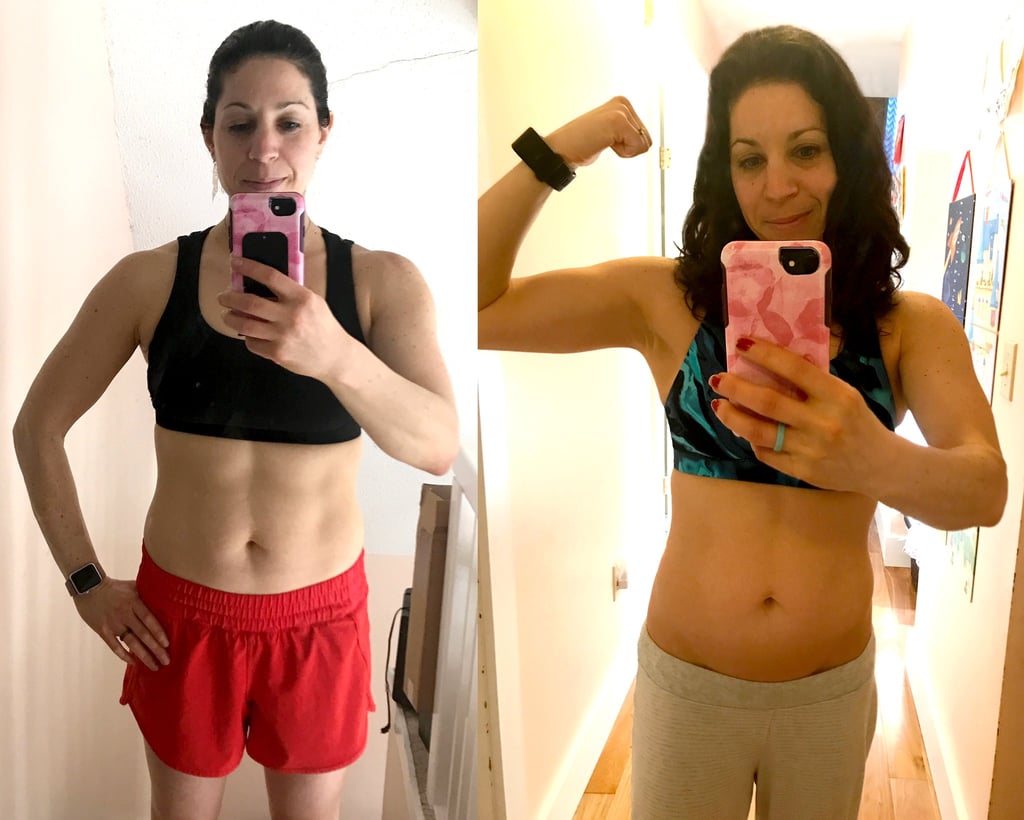
I began intermittent fasting (IF) in February 2017 and took several weeks to ease into the 16:8 plan [4], where I aimed to eat from 12:00 to 8 p.m. Some days it was 11:00 a.m. to 7 p.m., but I really tried to stick to only eating eight hours out of the day. Within one month, I saw results [5].
There are two main reasons I found so much success after three months [6]. One, IF allowed me to enjoy larger, more satisfying meals and gave me the freedom to eat what I wanted and not be as calorie-restrictive as I was with my previous daily eating schedule of three meals and two snacks.
But most importantly, reason number two, it helped me get a handle on my obsession over food [7] and weight loss and my sugar cravings [8].
Before IF, I never felt hunger because I was eating every two to three hours, like I was taught to. I was always reaching for food [9], even if I wasn't hungry. Intermittent fasting taught me that it's OK to feel hungry before meals [10], but what's interesting is that I felt less hungry eating less often, and surprisingly didn't crave sweets as much.
After 4 Months
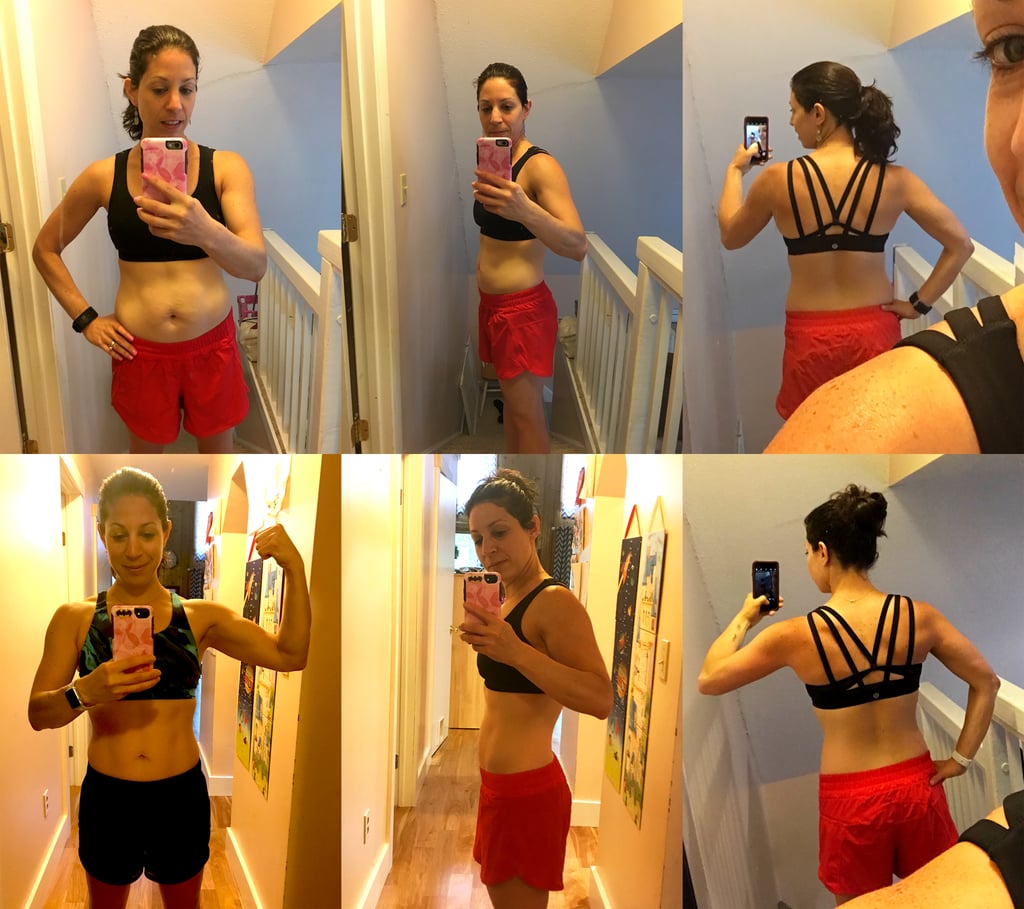
I took pics from all angles and was glad I did. I looked slimmer and had more muscle definition. I was never able to get results like this, even after training for a half-marathon [11], six months of CrossFit [12], and measuring my food [13] and counting my macros.
After 6 Months
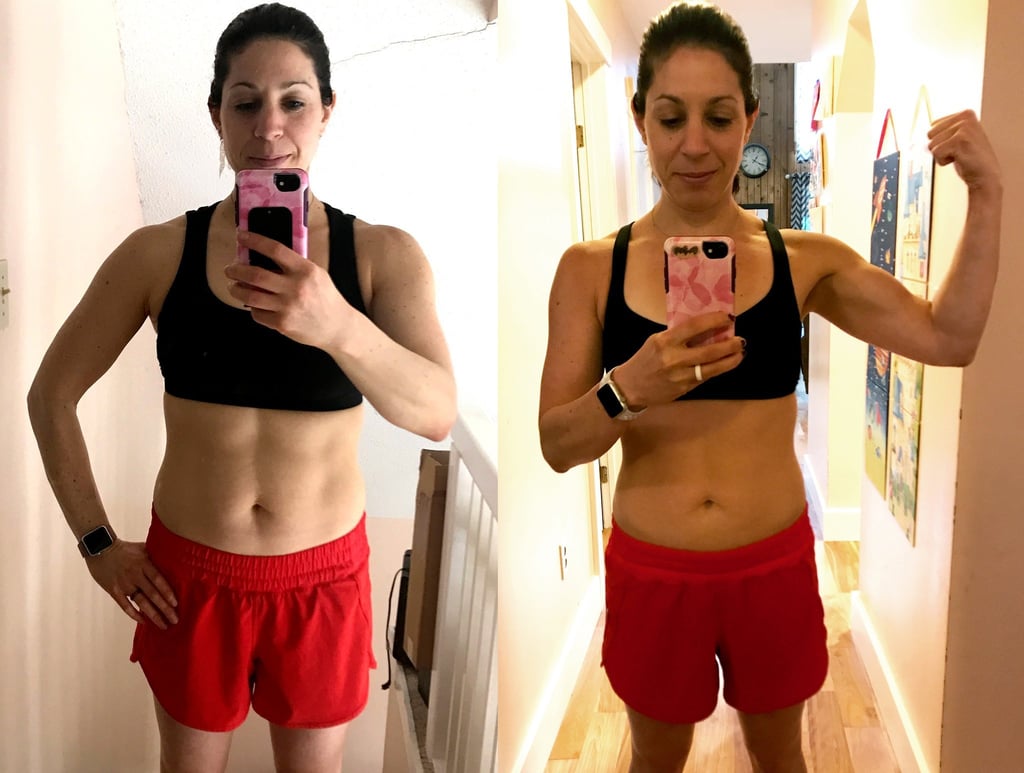
I realised that waiting until noon to eat was becoming easy [14], and I was stuffed after eating dinner around 6 p.m., so sometimes I'd shorten my eating window to noon to 7 p.m. When I did, I felt less bloated at night [15] and slept better because of it.
After 7 Months, Tried the Warrior Diet
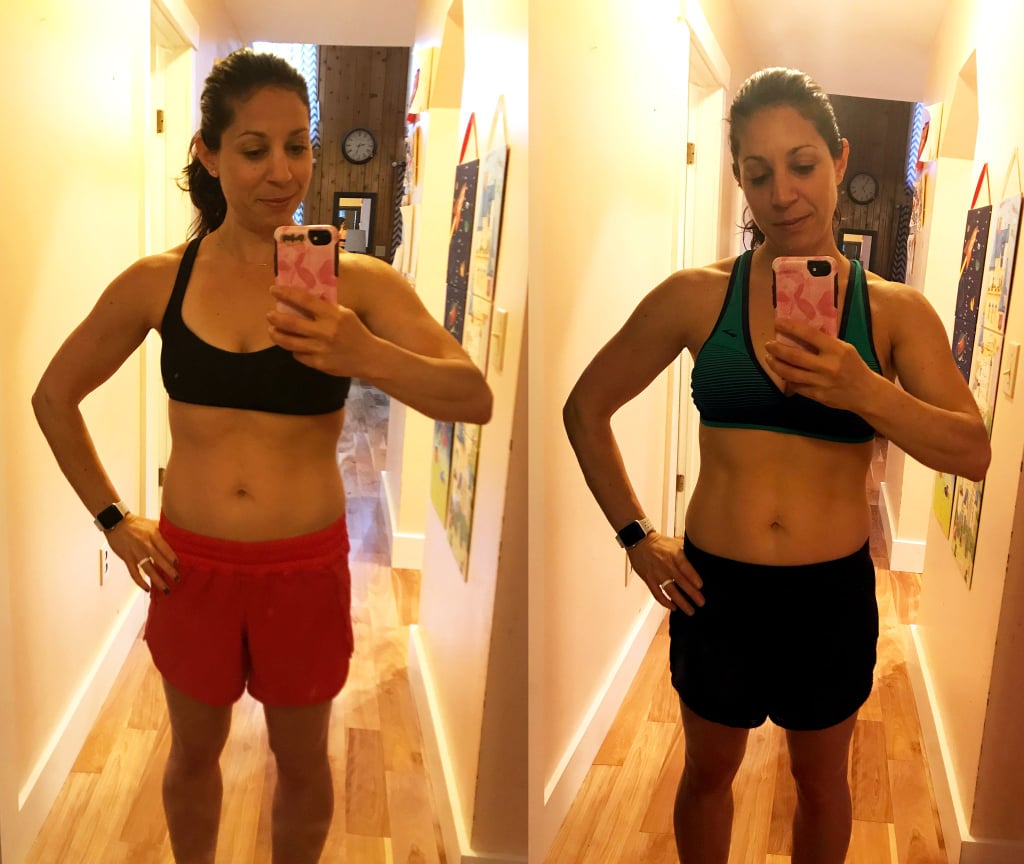
My seven- to eight-hour eating window was feeling amazing, but I figured I'd experiment with the Warrior Diet, or 20:4 [16], since I'd heard so much about it. You fast for 20 hours and eat all your daily calories in a four-hour eating window. I chose to eat from 3:00/3:30 p.m. to 7:00/7:30 p.m.
It seemed totally crazy and I only planned to do it for one week, thinking it'd be horrible, but by the end of the week, I liked it so much, I did it for another week. I experienced more mental clarity, more energy [17], happiness, and a leaner belly. After this experience, I listened to my body — some days I did 16:8, some days 18:6, a few days 20:4, and some days I ate all day (shout out to PMS).
After 9 Months, Tried Skipping Dinner
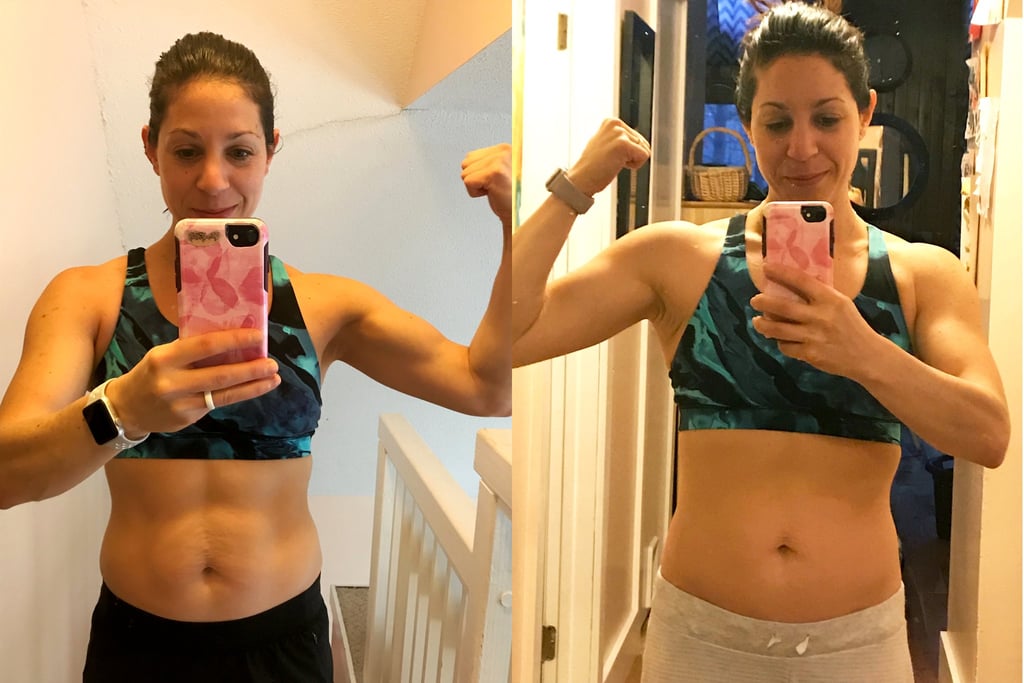
I stuck primarily with 16:8, but instead of skipping breakfast, I experimented with skipping dinner instead [18]. I ate from 9:00 a.m. to 4:00 p.m., keeping up with the seven-hour eating window that worked for me.
After one week, I loved that I had virtually no belly bloat and slept well, but hated feeling hungry for my early morning workouts, and missed eating dinner with my family. There is no way in hell I could maintain this and still be happy, so I happily went back to skipping breakfast [19].
After 1 Year
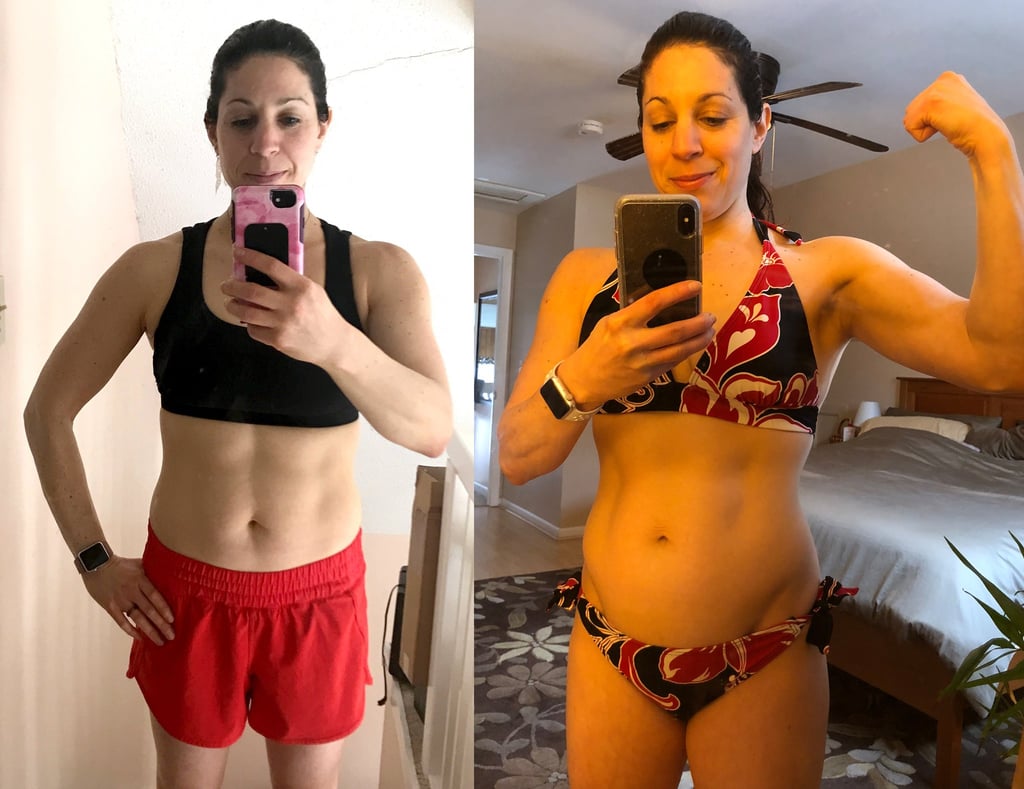
After one year of intermittent fasting [20], I felt incredible. I wanted to tell everyone about it! I felt less bloated, had reduced sugar cravings, slept better, had more mental focus and attention, more energy, my skin looked clearer and brighter [21], and I got sick less often. This was something I could sustain and I was so happy.
Everyone around me saw how IF transformed me both physically and mentally, and it even inspired my husband, four CrossFit buddies, and two neighbours to try it. They've all found success!
12 Months of Progress Pics
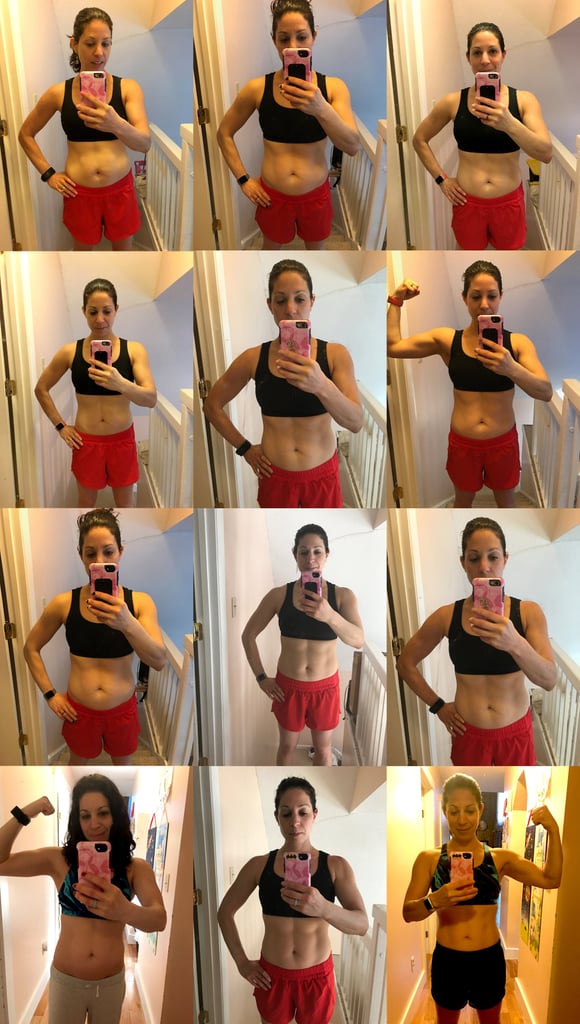
I took pics every single month [22] and I'm so glad I did. My progression was slow, and it was so motivating to compare each month's photo to my "before" photo.
If I only had the disappointing and increasing scale numbers [23] to go by (from gaining muscle, thanks to CrossFit [24]), I would have felt very defeated. Actually seeing my body change from month to month, regardless of numbers on the scale, was essential to the success of my journey [25].
After 14 Months
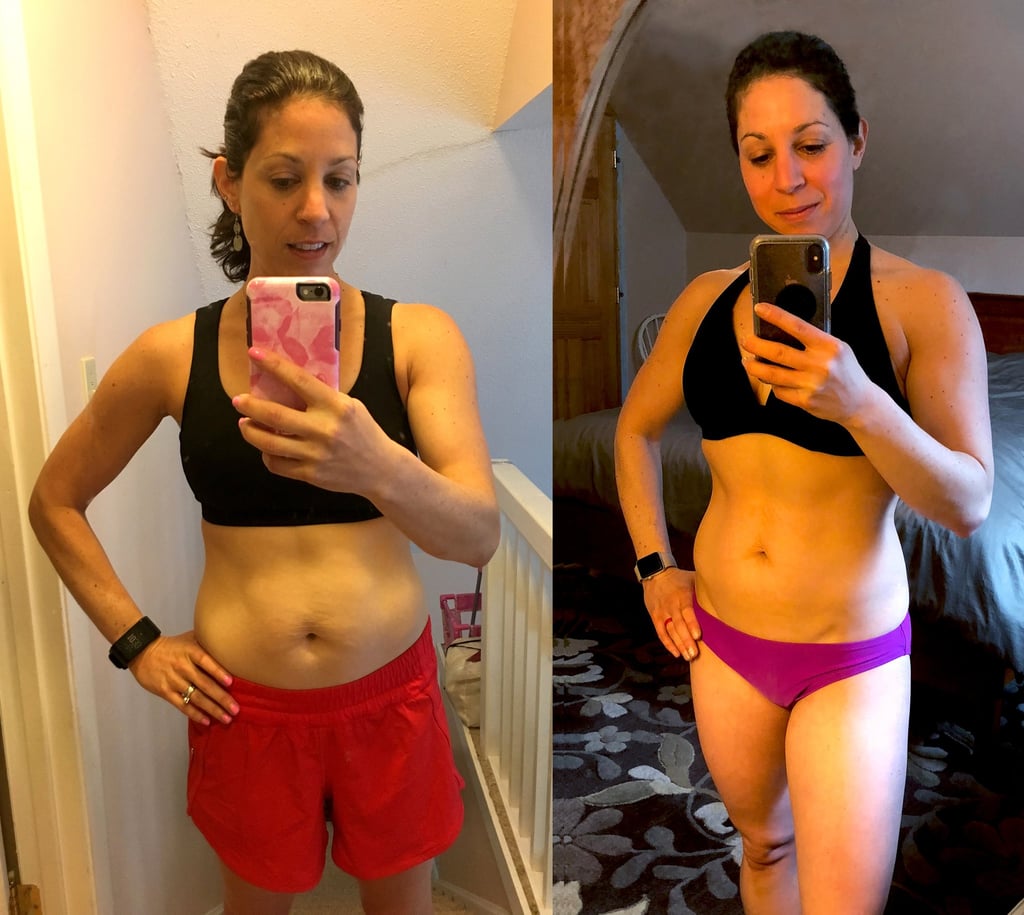
Intermittent fasting [26] was so effortless and had so many health benefits, but I was so excited about how I was finally able to ditch my belly fat [27]. Not only had it made me feel self-conscious (I've had a pudgy tummy for over 20 years, ever since college), but with cancer in my family, I was happy to diminish the visceral fat around my organs that can lead to disease.
After 15 Months, Trying 5:2
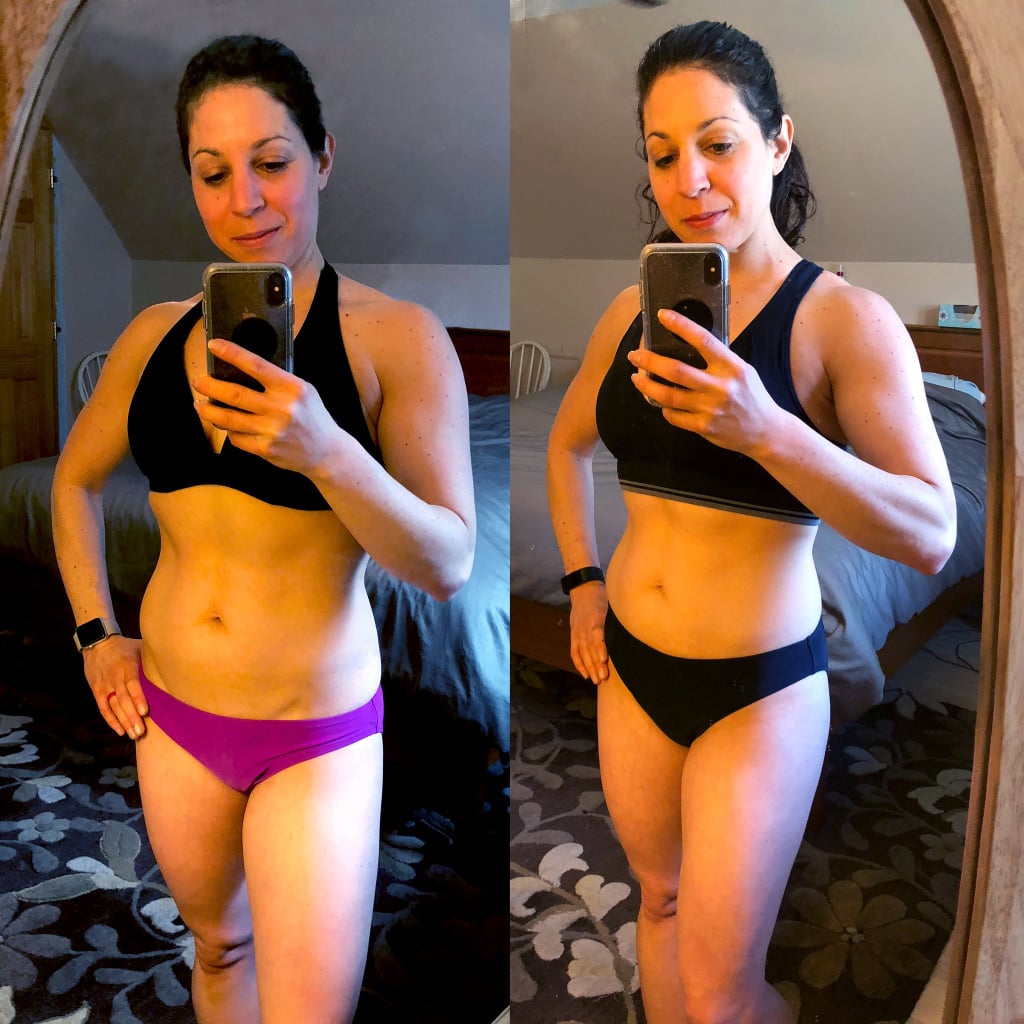
For three weeks, I ditched 16:8 completely and did 5:2 [28], where you eat normally for five days of the week (I ate from 10 a.m. until 8 or 9 p.m.), and 500 calories on two non-consecutive days. I chose to fast on Wednesdays and Sundays, fasting all day, and eating my 500 calories in the evening.
By the end of the third week, I lost about two pounds [29]. The before-and-after photos basically look the same. I could tell I was more bloated in the "after" photo, but I could also see that my face and belly looked a tad slimmer [30].
I wasn't a fan of 5:2 since eating so few calories on my fasting days made me hangry, but it did help me feel less puffy. I happily went back to daily 16:8 intermittent fasting.
After 16 Months, Trying Alternate Day Fasting
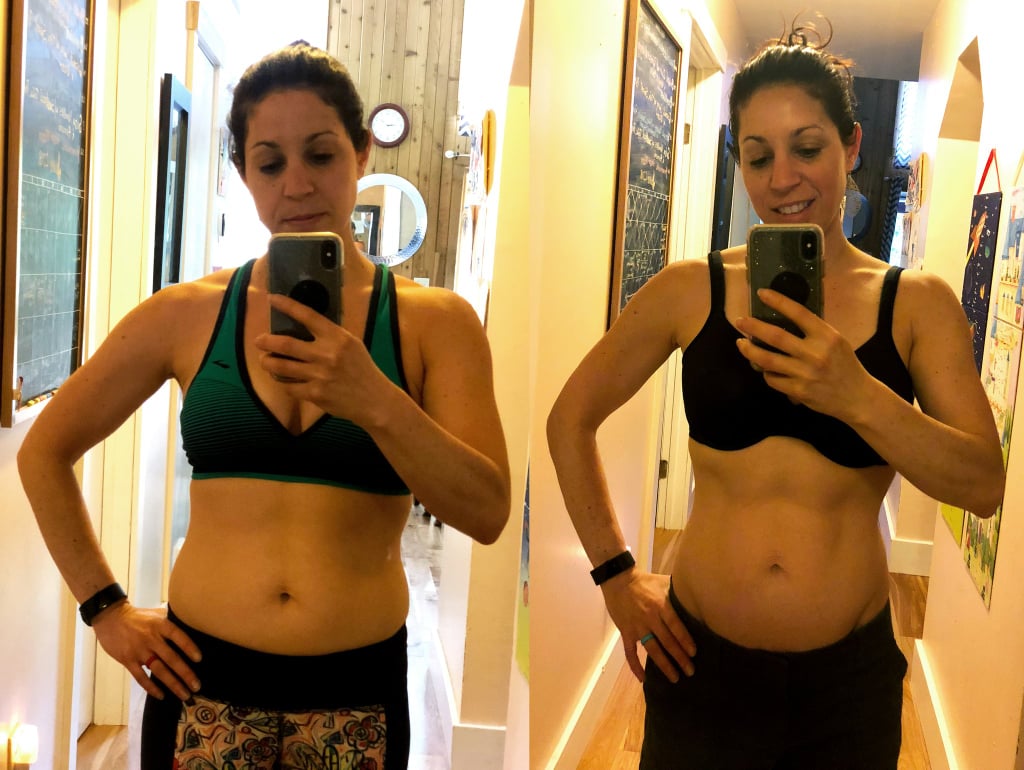
For three weeks, I tried alternate day fasting [31] (ADF), a form of intermittent fasting that involves fasting one day, eating the next, and repeating. If you need to, you are allowed to eat on fasting days, the recommended amount being 25 percent of your total calories.
To complement my workout schedule and family life, I fasted Mondays, Wednesdays, and Fridays so I could have the weekends to enjoy eating with my family. With my previous experience doing 5:2 [32], where I ate 500 calories a day on those two fasting days, I found that eating such a small amount actually made me more hungry. So for ADF, I didn't consume any calories during the 24-hour fasting window, which was from 6 p.m until 6 p.m. the following day. On my eating days, I ate from 10 a.m. to 6 p.m.
I not only saw the scale numbers drop an average of one pound a week, but I could see from the before and after photos that I definitely lost belly fat and my face looked thinner [33]. I saw more muscle definition in my arms and upper back and just felt leaner [34] and less puffy.
I did this for a total of four weeks, then went back to 16:8 and was able to maintain my results. It was a great way to break through my weight-loss plateau [35], and in the future, if I ever need to take a break from IF and end up gaining weight, I can use ADF as a way to get back on track.